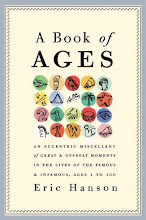On November 7th, 1917, the Bolsheviks overthrew the short-lived democratic government that had replaced the Tsarist government, putting in place a ragtag, ruthless, disorganized, incompetent, religiously committed but fanatically irreligious Soviet government that nobody thought would last three months, much less 70 years. It lasted far longer than the Thousand Year Reich of the Nazis, who had superior planning and machinery, not to mention far better art direction. In the end it was hard to distinguish the heroic statues promoting the two violently opposed ideologies. The two systems weren't that different in their design and operation. Both kleptocracies, both wonderfully efficient at appropriating property and killing their citizens.
During the Twenties capitalists didn't sleep at night, worrying about the Red Menace, expecting a Revolution to occur here any day. Communism made the Nazis seem far more attractive to people like Henry Ford and Charles Lindbergh and the Duke of Windsor, something I note in A Book of Ages. When the Crash came in 1929 Capitalism appeared doomed. For three years, the Hoover administration waited patiently for the economy to revive itself magically, but it didn't. It turned out that money hidden away by plutocrats was no more useful at stimulating an economy than money stolen by Bolsheviks.
Then on November 8th, 1932, FDR was elected president. He quickly betrayed his fellow patricians and rewrote the rulebook. His regulatory system presided over the best half century the US or any nation ever enjoyed. Until Ronald Reagan arrived and put things back to where they were before. But pure, unopposed capitalism is uninteresting on its own. It doesn't galvanize people. Twenty years after its death, Communism remains the energizing philosophy of an important part of the American political spectrum––not the left, but the right. They love it still. It's why they exist, even when it isn't there.
Saturday, November 7, 2009
The Revolution
Labels:
capitalism,
Communism,
FDR,
Nazism,
revolutionary,
the Crash,
the Great Depression
Subscribe to:
Post Comments (Atom)





No comments:
Post a Comment